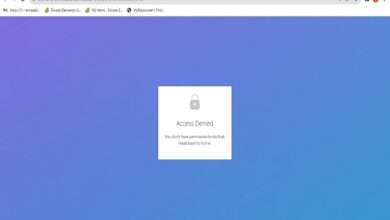Upload an Article: Boost Your Website Traffic Instantly

Uploading an article can seem daunting. But it’s easier than you think.
In today’s digital age, sharing your thoughts and knowledge has never been more accessible. Whether you’re a seasoned writer or a beginner, uploading an article allows you to reach a global audience. The process is simple yet impactful. By uploading your work, you contribute to the vast pool of online content, offering valuable insights and perspectives.
This guide will walk you through the steps to upload an article efficiently. You’ll learn how to prepare your content, choose the right platform, and ensure your article gets noticed. Ready to share your voice with the world? Let’s dive in and make your article live!
Importance Of Website Traffic
Website traffic is the lifeblood of any online presence. It measures the number of visitors to your site. High traffic can lead to increased engagement and revenue. Understanding the importance of website traffic helps in planning effective marketing strategies.
Benefits Of Increased Traffic
Increased traffic offers numerous benefits to your website. Below are some key advantages:
- Higher visibility: More visitors mean more people see your content.
- Improved SEO: Increased traffic often leads to higher search engine rankings.
- Better audience insights: More data helps in understanding visitor behavior.
- Enhanced engagement: Higher traffic can lead to more comments and shares.
Impact On Business Growth
Website traffic directly impacts business growth. Here’s how:
- Increased sales: More visitors can lead to more conversions.
- Brand awareness: High traffic increases your brand’s visibility.
- Revenue generation: More traffic often results in higher ad revenue.
- Lead generation: More visitors mean more potential leads.
Understanding and leveraging website traffic is crucial for any business. It plays a significant role in your online success.
Choosing The Right Article Topics
Choosing the right article topics is crucial for engaging your readers. Relevant topics attract more visitors and keep them coming back. To create great content, follow these steps:
Identifying Your Target Audience
First, identify your target audience. Understanding who you are writing for helps in creating relevant content. Consider the following:
- Age group: Are they young adults, middle-aged, or seniors?
- Interests: What are their hobbies and passions?
- Problems: What issues are they facing?
Knowing your audience’s needs will guide you in choosing the right topics.
Researching Popular Keywords
Next, research popular keywords. Using the right keywords improves your article’s visibility. Follow these steps:
- Use tools like Google Keyword Planner or Ahrefs.
- Look for keywords with high search volume and low competition.
- Focus on long-tail keywords for more specific topics.
Incorporating popular keywords will help your articles rank higher in search engines. This attracts more readers to your site.
By identifying your target audience and researching popular keywords, you will consistently choose engaging and relevant article topics.
Crafting Engaging Content
Creating engaging content is essential for capturing and retaining your audience’s attention. Whether you are writing a blog post, an article, or any other type of content, you need to focus on making it interesting and valuable. In this section, we will discuss how to craft engaging content that resonates with your readers.
Writing Attention-grabbing Headlines
Headlines are the first thing readers see. Make them count. Use strong, clear words. Ask questions or make bold statements. Keep headlines short. Aim for 6-8 words. This keeps them easy to read and understand. Use numbers. They grab attention and provide specific information.
Using Visuals And Multimedia
Visuals make content more engaging. Use images, videos, and infographics. They break up text and make it more appealing. Choose high-quality visuals. They should be relevant to your content. Embed videos to explain complex topics. Infographics summarize data in an easy-to-read format.
Multimedia elements keep readers interested. They make your content more dynamic and interactive. Always optimize images and videos for fast loading. This ensures a better user experience. Use captions for images. They provide context and enhance understanding.
Optimizing For Seo
Optimizing for SEO is essential for increasing your article’s visibility on search engines. A well-optimized article drives more traffic and engages your audience. This section will guide you through two key areas: incorporating keywords naturally and improving readability.
Incorporating Keywords Naturally
Using keywords naturally in your article is crucial. Keywords should flow within your content without sounding forced. Here are some tips:
- Choose relevant keywords: Use tools like Google Keyword Planner to find suitable keywords.
- Place keywords in titles: Ensure your main keyword appears in the title and subheadings.
- Use variations: Include variations of your keywords to keep the content natural.
For example, if your keyword is “upload an article,” variations could be “article upload” and “uploading articles.”
Improving Readability
Readability affects user engagement and SEO. Easy-to-read content keeps visitors on your page longer. Consider these points:
- Use short sentences: Sentences should be 12 words or less.
- Break up text: Use paragraphs, bullet points, and tables to avoid large blocks of text.
- Use simple language: Avoid complex words that may confuse readers.
Here’s an example of a readable paragraph:
Uploading an article involves a few simple steps. First, log in to your website. Next, navigate to the ‘Upload’ section. Lastly, choose your file and click ‘Submit’.
By following these tips, you can create content that is not only SEO-friendly but also user-friendly.
Promoting Your Article
After you upload an article, the next step is promotion. Effective promotion ensures your content reaches a wider audience. This section covers key strategies to boost your article’s visibility.
Leveraging Social Media
Social media platforms are powerful tools for promotion. Share your article on platforms like Facebook, Twitter, and LinkedIn. These platforms have a broad user base. Craft engaging posts with a brief description of your article.
Include relevant images or graphics. Visual content attracts more attention. Use appropriate keywords to improve searchability. Engage with your audience by responding to comments and questions. This interaction builds a loyal readership.
Utilizing Email Marketing
Email marketing remains an effective promotional strategy. Send your article to your email subscribers. Write a compelling subject line to grab their attention. Keep the email content concise and engaging.
Include a clear call-to-action. Encourage readers to visit your website or share the article. Personalize the email to make it more appealing. Segment your email list to target specific groups. This approach increases the chances of your article being read.
Credit: engagesupport.campuslabs.com
Utilizing Backlinks
Backlinks play a vital role in SEO. They help increase your website’s authority. Effective backlink strategies can boost your search engine rankings. This section will explore various ways to utilize backlinks effectively.
Reaching Out To Influencers
Influencers have a strong online presence. Their followers trust their recommendations. Reaching out to influencers can help you gain valuable backlinks. Start by identifying influencers in your niche. Build a genuine relationship with them. Share their content and engage with their posts. Once you have established trust, request a backlink. Influencers are more likely to link back if they see value in your content.
Guest Posting On Reputable Sites
Guest posting is a powerful way to gain backlinks. Reputable sites have high domain authority. Their readers trust their content. Writing guest posts for these sites can drive traffic to your website. Start by researching sites that accept guest posts. Ensure they are relevant to your niche. Pitch unique and valuable content ideas to them. Write high-quality articles that provide value to their readers. Include a backlink to your website in the author bio or within the content. This strategy can help you build strong backlinks and increase your website’s visibility.
Analyzing Traffic Data
Analyzing traffic data is essential for understanding how users interact with your website. It helps you identify what works and what needs improvement. By examining this data, you can make informed decisions to enhance your website’s performance and user experience.
Using Google Analytics
Google Analytics is a powerful tool for analyzing traffic data. It provides detailed insights into user behavior and website performance. Setting up Google Analytics is simple. Sign up for an account, add the tracking code to your website, and start collecting data.
Here are some key metrics to monitor:
- Pageviews: The total number of pages viewed.
- Unique Pageviews: Pages viewed by individual users.
- Bounce Rate: Percentage of users who leave after viewing one page.
- Average Session Duration: Average time users spend on your site.
Identifying High-performing Content
Identifying high-performing content helps you understand what resonates with your audience. Focus on content that attracts the most traffic and keeps users engaged. Look at the following metrics:
| Metric | Description |
|---|---|
| Pageviews | Total number of views for each page. |
| Average Time on Page | Time users spend on a specific page. |
| Conversion Rate | Percentage of visitors who take a desired action. |
Content with high pageviews and average time on page is likely engaging. Look at the conversion rate to see which pages drive desired actions. This data helps you replicate successful strategies in future content.

Credit: www.youtube.com
Maintaining Consistency
Maintaining consistency is key to a successful blog. Consistent content helps build trust with your audience. It keeps readers coming back for more. Let’s explore some effective strategies.
Creating A Content Calendar
A content calendar helps plan and organize your posts. It ensures you post regularly and stay on track. Here’s how to create one:
- Determine your posting frequency (daily, weekly, etc.).
- Use a spreadsheet or tool to map out your schedule.
- Include topic ideas, deadlines, and keywords.
- Review and adjust the calendar as needed.
Staying organized with a content calendar reduces stress. It keeps your blog consistent and engaging.
Engaging With Your Audience Regularly
Regular engagement with your audience builds loyalty. It shows you value their input. Here are some ways to engage:
- Respond to comments on your blog posts.
- Ask questions and encourage discussions.
- Share user-generated content.
- Host live Q&A sessions or webinars.
Engaging with your audience makes them feel heard. It creates a sense of community and encourages repeat visits.
| Strategy | Benefits |
|---|---|
| Content Calendar | Keeps you organized, ensures regular posts |
| Audience Engagement | Builds loyalty, fosters community |

Credit: openjournalsystems.com
Frequently Asked Questions
How To Upload An Article Easily?
To upload an article, first log in to your account. Click on the “Upload” button. Follow the on-screen instructions to select and upload your article file.
What Formats Are Accepted For Article Uploads?
Most platforms accept common formats like. doc,. docx,. pdf, and. txt for article uploads. Check the specific requirements of the platform you are using.
Can I Edit My Article After Uploading?
Yes, many platforms allow you to edit your article post-upload. Simply go to your article dashboard and select the article you want to edit.
Are There Word Count Limits For Uploading Articles?
Some platforms may have a word count limit for articles. Check the platform’s guidelines for specific word count requirements.
Conclusion
Uploading an article doesn’t have to be complicated. Follow the steps outlined. Proofread your content carefully. Ensure your keywords are strategically placed. Use engaging, clear language to attract readers. Consistency is key in maintaining a professional blog. Keep your audience’s needs in mind. Engage with your readers through comments. Regular updates will keep your blog fresh.





